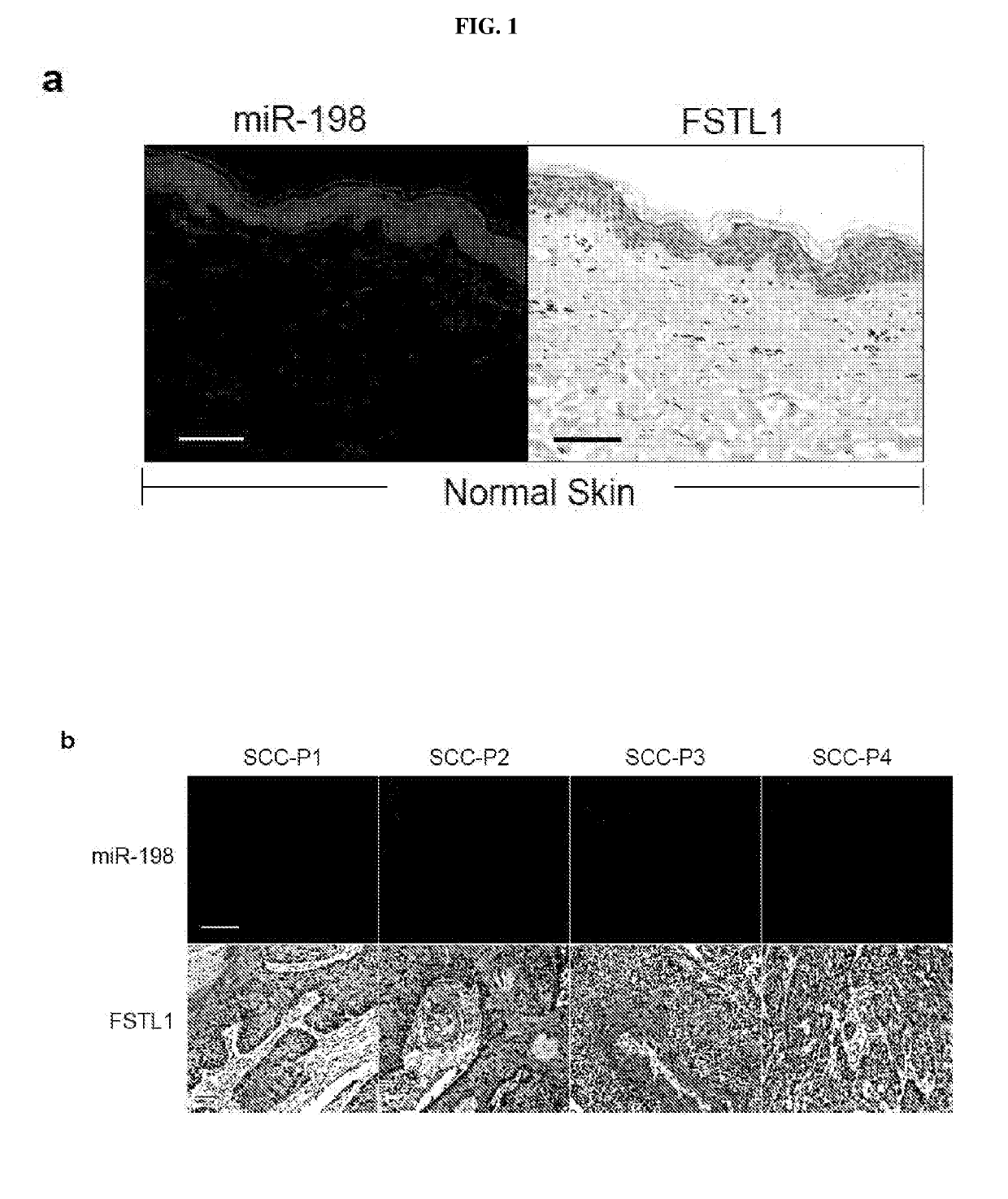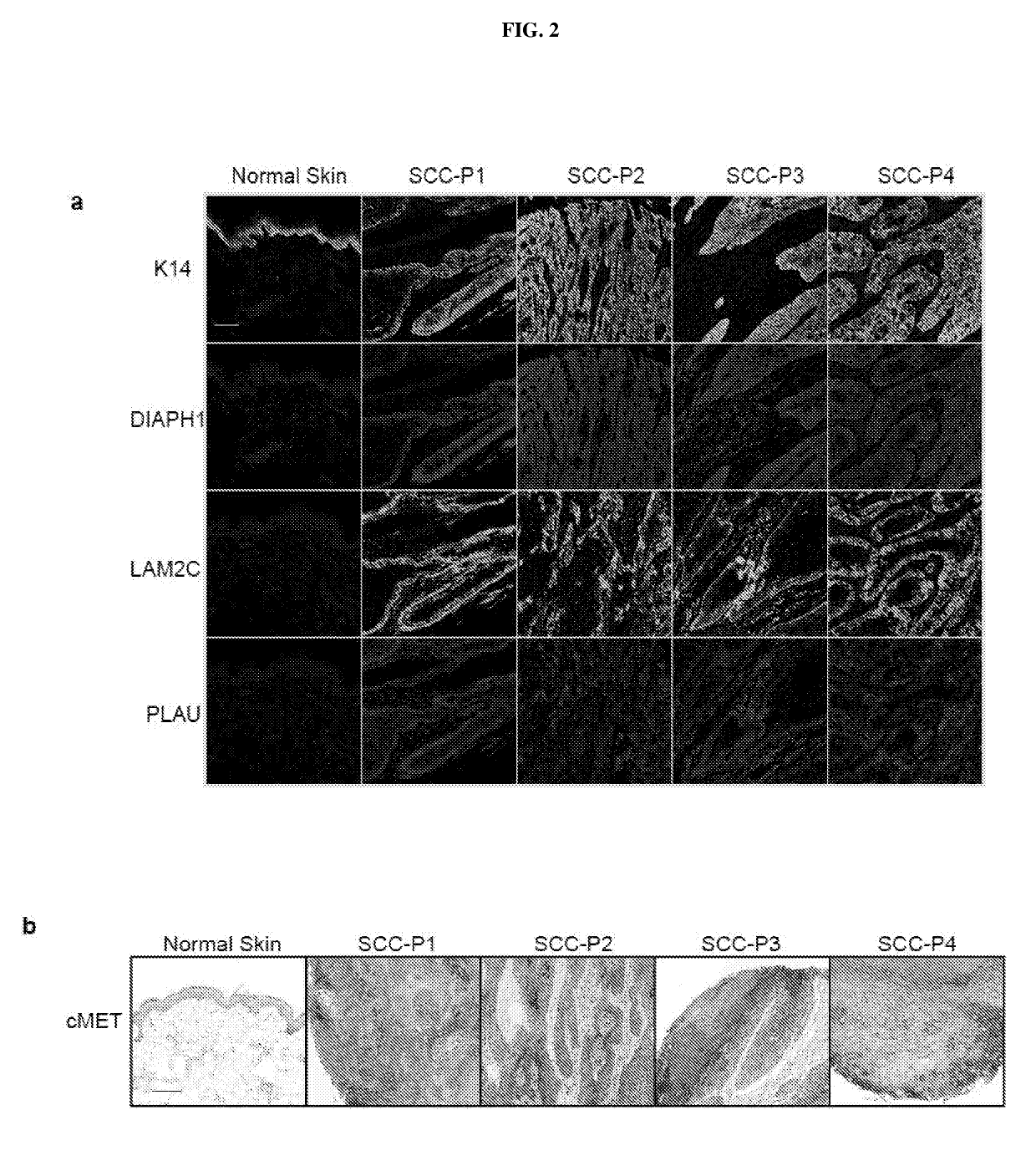Consequences of a defective switch in cutaneous squamous cell carcinoma
a cutaneous squamous cell carcinoma and defective switch technology, applied in the field of biochemistry, can solve problems such as poor patient survival rates
- Summary
- Abstract
- Description
- Claims
- Application Information
AI Technical Summary
Benefits of technology
Problems solved by technology
Method used
Image
Examples
Embodiment Construction
[0036]Carcinomas, for example squamous cell carcinomas (SCC), result from the uncontrolled growth of squamous cells, a subtype of epithelial cell. For example, Head and neck squamous cell carcinomas (HNSCC) develop from mucosal linings of the upper aero-digestive tract, mainly in the nasal cavity, paranasal sinuses, nasopharynx, larynx, trachea, oropharynx and oral cavity.
[0037]The molecular switch disclosed herein is based on the concept that the status of a cell can have an impact, not only on the expression level of a specific gene, but also on what product is expressed by said gene. By way of an explanation, in on example the gene FSTL1 can produce either the pro-migratory FSTL1 protein, or the anti-migratory miR-198, depending on the state of the cell. It is shown, for example, the carcinoma cells have an increased level of FSTL1 protein, which, in itself is, understood to result in the pro-migratory behaviour of carcinoma cells. Carcinoma-free cells, on the contrary, are under...
PUM
 Login to View More
Login to View More Abstract
Description
Claims
Application Information
 Login to View More
Login to View More - R&D
- Intellectual Property
- Life Sciences
- Materials
- Tech Scout
- Unparalleled Data Quality
- Higher Quality Content
- 60% Fewer Hallucinations
Browse by: Latest US Patents, China's latest patents, Technical Efficacy Thesaurus, Application Domain, Technology Topic, Popular Technical Reports.
© 2025 PatSnap. All rights reserved.Legal|Privacy policy|Modern Slavery Act Transparency Statement|Sitemap|About US| Contact US: help@patsnap.com



